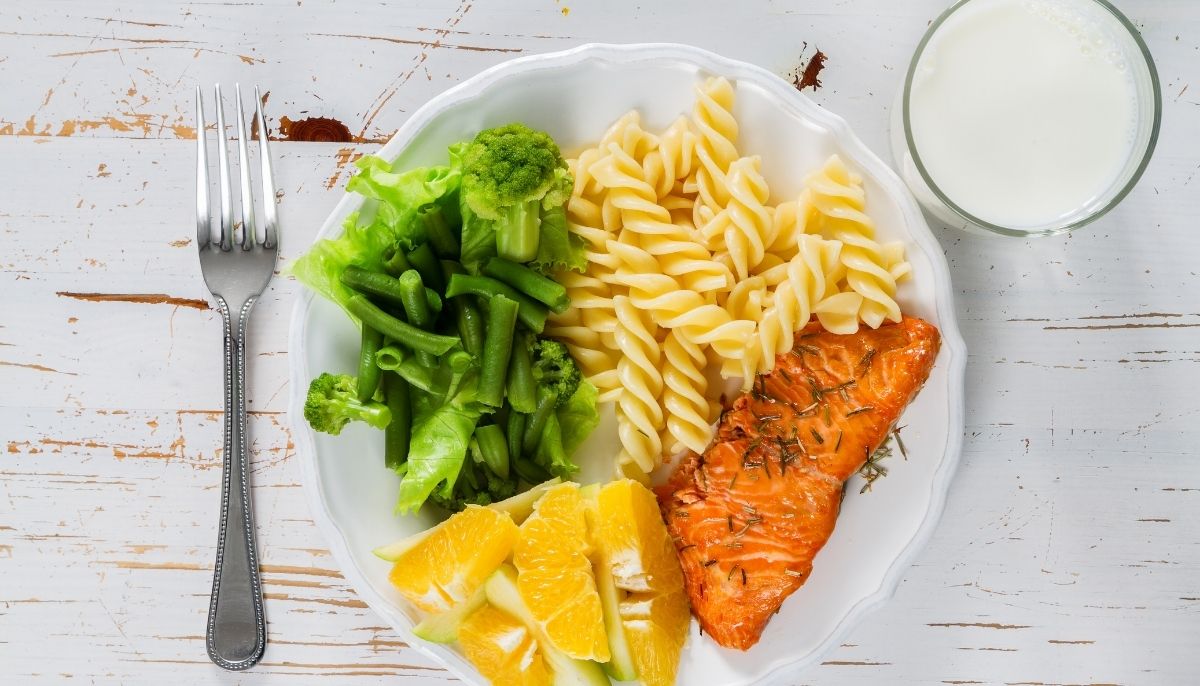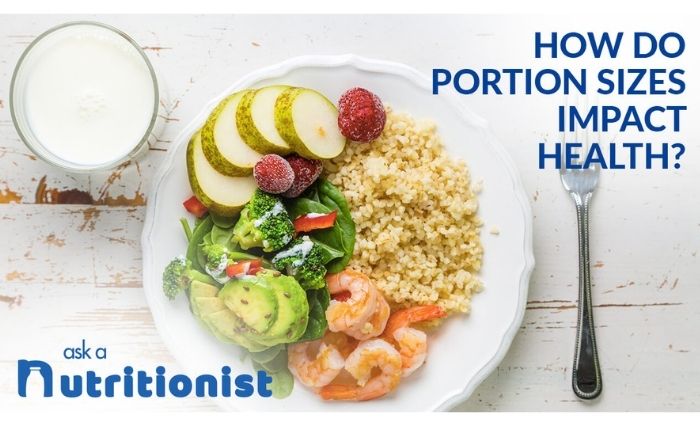Being mindful of portion sizes without being overly preoccupied can help guide eating choices.
By:

Healthy eating habits are built on a pattern of daily food and beverage choices. Establishing healthy eating habits supports long-term health by helping to increase intake of important nutrients that promote optimal growth and development and reducing chronic disease risk. High-quality, nutrient-dense foods from the five food groups—dairy, vegetables, fruits, grains and protein—should be the foundation for healthy eating patterns, and the variety of wholesome foods available allow for personal preferences, budgets and cultures. While eating patterns may look different from person to person, similar techniques for adopting a healthy diet can be applied. Mindfulness, the act of paying attention to the present moment, is a useful strategy to increase awareness and support healthy eating.
Using Mindfulness to Enjoy a Variety of Foods
Mindfulness is the practice of listening to internal cues and increasing awareness. Learning to recognize the signs of hunger, such as an empty feeling in the stomach or inability to concentrate, helps a person determine when it’s time to eat. Recognizing the feeling of fullness or satisfaction can help a person identify when it’s time to stop eating. As familiarity with the sensations of hunger and fullness register, this process becomes easier to identify. There are tips to help practice mindful eating and increase eating enjoyment.
Portion Sizes and Mindfulness
Portion sizes can be incorporated into a mindfulness practice to help guide healthy eating. Being mindful of portion sizes while focusing on high quality foods such as fruits and vegetables; milk, cheese and yogurt; beans, nuts and seeds; fish, lean meat, poultry and eggs; and healthy fats and oils can help guide eating choices. There are many tools to measure portion sizes and help balance variety, taste and health. Hand symbols, such as using one fist to represent one cup, can substitute for measuring cups and spoons as an easy method to compare and learn portion sizes. The MyPlate website from the U.S. Department of Agriculture also provides a comprehensive list of portion sizes for each food group and accompanying images. Together, portion sizes and mindfulness and a focus on high quality foods can support eating and enjoyment of a variety of foods in support of a healthy eating pattern.

Teaching Children Mindful Eating
Children need the same nutritious foods as adults to grow and thrive, though often in smaller amounts. Teach children to eat mindfully by modeling these behaviors with them at meals and snacks. Serving foods at predictable times and allowing for enjoyment of meals by eating together and focusing on the enjoyment of food and conversation helps children learn how to eat and the amount to eat for their bodies. Over time and as children grow to adulthood, they will have the tools they need to eat healthfully.
Explore and learn more about healthy eating practices like meal planning and ideas for healthy meals and snacks or educators can access print and digital educational resources to teach nutrition to students.
Students can master the concept of serving sizes for foods from all five food groups using hand symbols as a comparison and learn how many servings from each food group is needed daily to support good health by watching Let's Eat Healthy Nutrition Lessons. Tune in and subscribe to the HealthyEating channel on YouTube to watch the whole series for fourth and fifth grade students.
References
Join Maria Frye, RDN, as she shares 4 simple portion size tips to help create a healthy eating pattern.

Watch the latest episode of Ask A Nutritionist and discover how to plan healthy and nutritious meals for your family.

Subscribe to our blog to stay up to date on the latest news, products, and more.